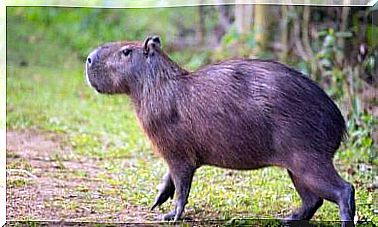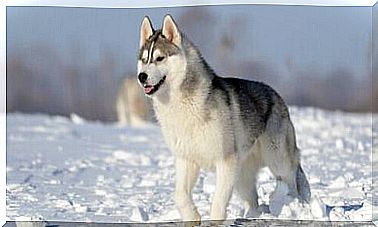9 Species Of Flies You Need To Know
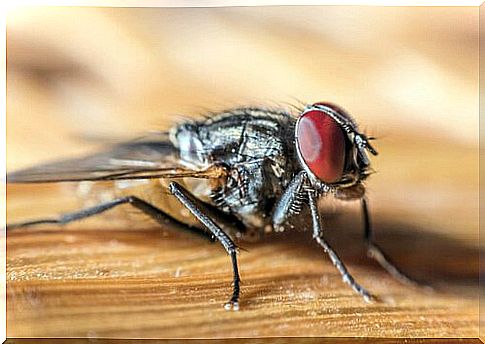
They tend to be quite annoying all the time, appear everywhere and seem to have a real passion for dirt. Some fly species are more common than others.
Care must be taken with those specimens that may even transmit disease. Let’s get to know flies, very common insects.
How many species of flies are there?
Within the Diptera family , the most famous specimen is the common fly. All its members are characterized by living for about 30 days and carrying out a complete cycle of metamorphosis.
From egg to larva, then cocoon to adulthood. Let’s see then, the 9 species of flies you need to know
1. Tafàno
It can measure up to 25 millimeters in length, is dark brown, and the eyes – conical in males and separated in females – are large, green or black in color. Gadflies mainly attack livestock and can cause weight loss in these animals.
In terms of reproduction, it should be noted that they mate in the air and on land. Subsequently, the females deposit their eggs in a humid area or in water. These hatch after only 7 days.
2. Fly of the attics
They fly slowly, have a body shape that resembles clusters of grapes and are attracted to lights or heat.
Generally, they prefer to live in warm places and hibernate in the winter. They reach 10 millimeters in length and, when at rest, their wings cover their entire body, which is dark gray in color, with olive green and brown spots.
3. Blue fly
It appears mainly in rotting or decaying substances, such as meat or cheese. It also grows around bird or rodent carcasses.
Popularly called ” blue fly “, this flying insect measures up to 12 millimeters in length and its body is metallic blue.
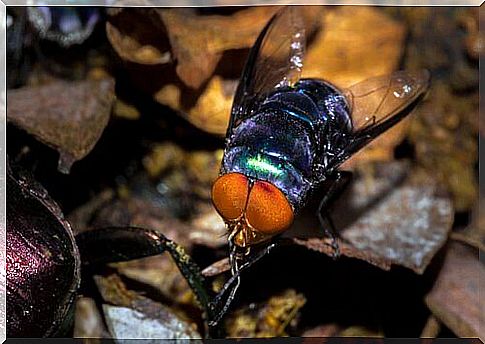
4. Housefly
This type of insect is attracted to different types of food, both for people and for animals.
It prefers places with moist and decaying plant material and, at night, rests near food.
The larvae are white, have no legs and need 60 days to complete metamorphosis. Adults are up to 8 millimeters long, have a gray thorax and a yellow abdomen with slightly sharp wings.
5. Fruit fly
It is one of the most widespread species of fly and is particularly visible in the summer months. This is due to the fact that it breeds in areas where there are fermentation residues – as well as fruit, even vegetables – or near clogged drains and dirty utensils.
The fruit fly is very small – only 3 millimeters long – and its body is yellow, while its eyes are reddish in color.
6. Fly moth
This small fly of only 2 millimeters in length can be found in dirty sewers, drains or bathrooms. It spends more time resting than in flight, flies slowly and feeds on organic matter that it extracts from sediments.
Its body is brown or black, the wings are covered with hair. Compared to the metamorphosis process, the complete transformation takes about 60 days before this insect can reach adulthood.
7. Fruit fly
This fly reproduces in fermented waste, as the larvae feed on bacteria and yeast. With a bright yellow body and red eyes, Drosophila melanogaster is only 3 millimeters long and lives a maximum of two weeks.
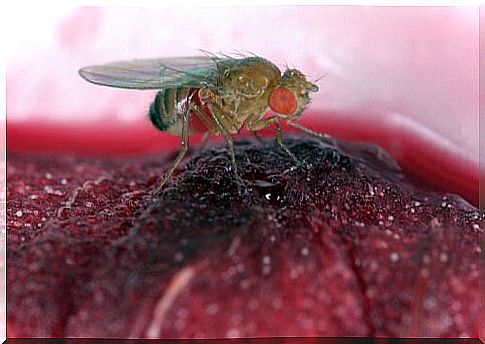
8. Minor housefly
Its habitat preferred are the areas in which organic matter is decomposing semi-liquid and looks like the house fly, although it is smaller. In fact, it only reaches 6 millimeters in the adult stage.
This insect can transmit eye diseases to livestock and humans. It is easy to identify thanks to its gray and black body with red eyes.
9. Meat fly
It is considered a dangerous carrier of pathogens, as it proliferates in the presence of putrid or decaying meat. The larvae develop and live in organic materials until they complete their life cycle.
Also, this fly is large in size compared to the others. It can measure a good 20 millimeters in length, 5 less than the horsefly. It draws attention for its metallic gray body and dark-spotted abdomen.

